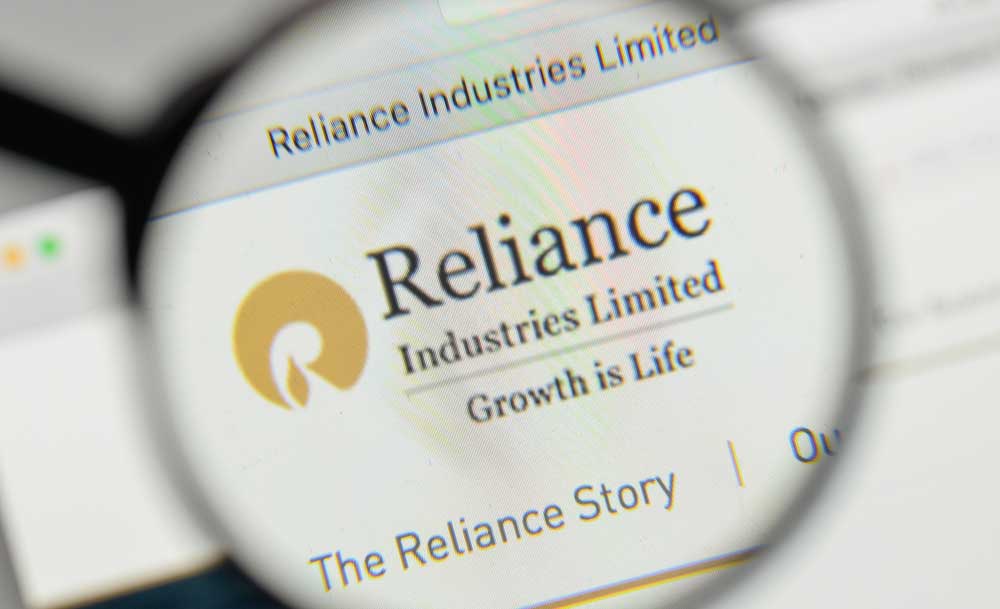Reliance Industries on Friday beat Street estimates when it recorded a 6.8 per cent growth in June-quarter net profit as a double-digit growth in its retail and telecom businesses helped to offset its worst oil refining margins in 18 quarters.
Consolidated profit rose to Rs 10,104 crore from Rs 9,459 crore a year ago.
Brokerages such as Motilal Oswal were expecting Reliance to report a profit of around Rs 8,900 crore.
On a sequential basis, however, RIl’s bottomline showed a drop of 2.5 per cent. Standalone profits (excluding organised retail, media and digital services) showed a growth of 2.4 per cent at Rs 9,026 crore.
The topline exceeded expectations at Rs 172,956 crore, an increase of 22 per cent over Rs 141,699 crore a year ago.
Analyst expectations were muted ahead of the numbers because of difficult conditions in the refining and petrochemicals businesses amid rising crude prices and a global slowdown.
“Our first-quarter earnings were strong despite weak global macro-economic environment and challenging hydrocarbon market conditions. The performance reflects the benefits of deep refining and petrochemicals integration, chain economics and feedstock flexibility,’’ Reliance chairman and managing director Mukesh Ambani said.
The refining & marketing segments saw revenues rise 6.4 per cent over the same period last year to Rs 101,721 crore, while the segment EBIT (earnings before interest and taxes) fell 15 per cent to Rs 4,508 crore.
Though RIL maintained a premium over Singapore complex margins, the gross refining margins of the company during the quarter came in at $8.1 per barrel, which was lower than expectations of $8.5 per barrel.
Revenues from the petrochemicals segment showed a decline of nearly 7 per cent to Rs 37,611 crore because of a decrease in volumes and price realisations largely in paraxylene and monoethylene glycol (MEG), which was partially offset by an increase in the volumes of polyesters. EBIT for the segment fell 4.4 per cent to Rs 7,508 crore.
Strong Jio show
At a time analysts were expecting profits at Reliance Jio to take a hit because of the the transfer of fibre and tower assets to a special purpose vehicle, the arm reported a net profit of Rs 891 crore, a growth of 6.1 per cent on a sequential basis and almost 46 per cent year-on-year.
Operating revenues at Rs 11,679 crore showed a rise of 5.2 per cent over the previous three-month period. The revenues rose 44 per cent on a year-on-year basis.
However, average revenue per user continued to decline at Rs 122 per subscriber per month against Rs 126.2 in the preceding quarter. This came on a day Jio overtook Bharti Airtel to become the second largest mobile operator with 32.29 crore subscribers and a 27.80 per cent market share in May, according to Trai data.
Retail shines
Reliance Retail on Friday reported a 69.9 per cent increase in its earnings before interest, tax, depreciation and amortisation (Ebitda) to Rs 2,049 crore for the first quarter ended June 30, led by strong sales growth.
The retail arm of Reliance Industries Ltd had posted an Ebitda of Rs 1,206 crore in the corresponding period a year ago.
Revenue from the organised retail segment of RIL during the quarter was up 47.53 per cent to Rs 38,196 crore against Rs 25,890 crore of the corresponding period last fiscal.
In the April-June period, Reliance Retail added 265 stores. It also added 23.65 per cent more retail space during the period at 23 million sq ft against 18.6 million sq ft a year ago.
“Despite a slowdown in the FMCG and consumer sector, Reliance Retail continues to grow faster than every other player,” said RIL. “Customer-centric approach, sourcing and operating cost advantage and benefit of operating leverage helped Reliance Retail deliver record Ebitda for the quarter.” During the quarter, Reliance Retail crossed the milestone of 100 million registered customers and 150 million footfalls, establishing its position as the most preferred retailer in India, it added.
In the April-June period, Reliance Retail added 265 stores. It also added 23.65 per cent more in its retail space to 23 million sq ft during the period, from 18.6 million sq ft.











